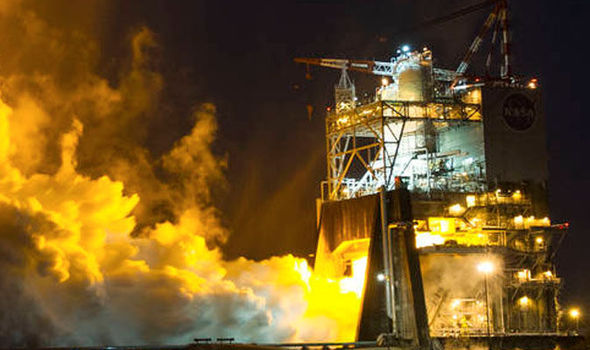-
Tips for becoming a good boxer - November 6, 2020
-
7 expert tips for making your hens night a memorable one - November 6, 2020
-
5 reasons to host your Christmas party on a cruise boat - November 6, 2020
-
What to do when you’re charged with a crime - November 6, 2020
-
Should you get one or multiple dogs? Here’s all you need to know - November 3, 2020
-
A Guide: How to Build Your Very Own Magic Mirror - February 14, 2019
-
Our Top Inspirational Baseball Stars - November 24, 2018
-
Five Tech Tools That Will Help You Turn Your Blog into a Business - November 24, 2018
-
How to Indulge on Vacation without Expanding Your Waist - November 9, 2018
-
5 Strategies for Businesses to Appeal to Today’s Increasingly Mobile-Crazed Customers - November 9, 2018
NASA Testing Future SLS Rocket Engine Today
NASA is hoping the SLS will eventually take humans to Mars.
Advertisement
If all continues as planned, NASA’s SLS will be using four RS-25 engines “at the bottom of the core stage”, says Aerojet, which differs from the space shuttle, as it only used three.
The Space Launch System (SLS) is NASA’s next generation heavy-lift rocket, the powerful vehicle to get us to Mars, back to the moon, to an asteroid, or even to Europa. A crowd of about 1,000 people, media representatives, employees and special guests gathered near the A-1 test stand at Stennis Space Center to watch a almost nine minute test of a rocket like those that will send astronauts into deep space. It is “the Ferarri of rocket engines”, if you ask NASA. “They are the most reliable engine in the inventory”.
The resulting engine, according to Martin Burkey of the SLS strategic communications team, blows everything we now have out of the water.
The Aerojet Rocketdyne engine is equipped with a new controller, or “brain”, among its improvements. On the video, you can witness the space agency firing the engine up for 535 seconds. When it combusts, temperatures will exceed 6000 degrees. It has to move a lot of propellants to generate a lot of energy. So far, the success rate is 100 percent. (That’s the amount of time the engine would burn during a regular launch). “A single turbine blade the size of a quarter – and the exact number and configuration inside the pump is now considered sensitive – produces more equivalent horsepower than a Corvette ZR1 engine”, Burkey wrote.
The test was to see how the engines are working with a new controller component that regulates engine performance.
Advertisement
The almost 9-minute test fire will simulate the heat and pressure stresses the engine will face during liftoff.




























